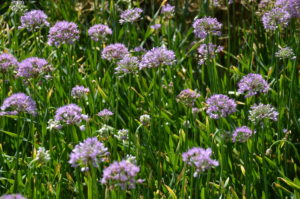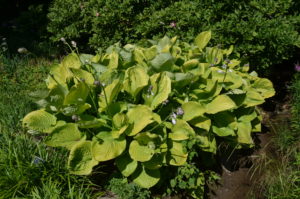Deadheading, the practice of removing the old spent flowers from perennials, is a way to improve a garden’s appearance and reduce overcrowding. Secondarily, many (not all) will rebloom after deadheading.
Not all perennials respond to deadheading by reblooming. Most daylilies (Hemerocallis x.), coralbells (Heuchera spp.), and hostas (Hosta spp.) are prime examples of perennials that do not rebloom. Other examples include:
Bear’s breeches (Acanthus mollis)
Bluestar (Amsonia tabernaemontana)
Lady’s mantle (Alchemilla mollis)
Rhizomatous Onions (Allium spp.)
Artemisia, wormwood (Artemisia spp.)
Astilbe, false spirea (Astilbe spp.)
Baptisia, False indigo (Baptisia spp.)
Bergenia (Bergenia cordifolia)
Heartleaf brunnera (Brunnera macrophylla)
Montbretia (Crocosmia)
Joe Pye (Eupatorium spp.)
Most kinds of fall flowering sunflowers (Helianthus spp.)
Lenten Rose or hellebore (Helleborus x orientalis)
Bearsfoot hellebore (Helleborus foetidus)
Rose mallow (Hibiscus moscheutos)
Most kinds of Irises (Iris spp.)
Ligularias (Ligularia spp.)
Monkey grass (Liriope spicata)
Catmint (Nepeta × faassenii)
Herbaceous Peony (Paeonia spp.)
Woodland phlox (Phlox divaricata)
Obedient plant (Physostegia virginiana)
Lungwort (Pulmonaria spp.)
Lambs’ ears (Stachys byzantina)
Culver’s root (Veroncastrum virginatum)
To reinforce the benefits of deadheading, the perennial bed should be weeded, mulched, fertilized, and watered. Apply a water soluble fertilizer such as Miracle-Gro™ or Schultz™. Clean up the bed of weeds and apply additional amounts of an organic mulch. If soil is dry, irrigate the bed deeply over 3 – 4 hours of overhead irrigation (equivalent of 1 ½ inches of rainfall).
Removal of the old flowers also lessens the threat of seed dispersal and future hoeing of unwanted seedlings. Many one-time bloomers, such as columbine, fall anemone (Anemone x hybrida), and gaillardia will self-seed if spent flowers are not deadheaded.



 Posted in
Posted in 
